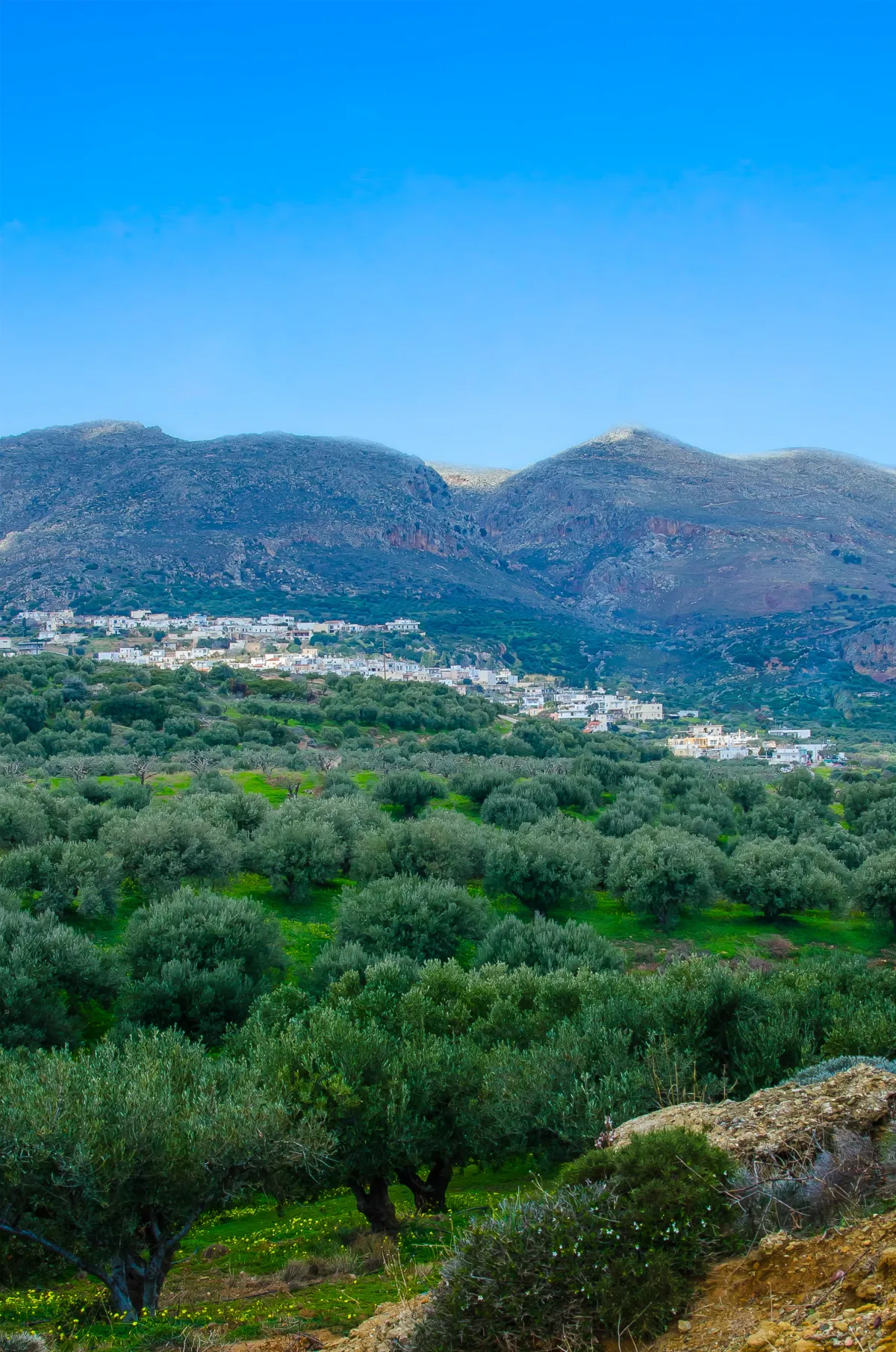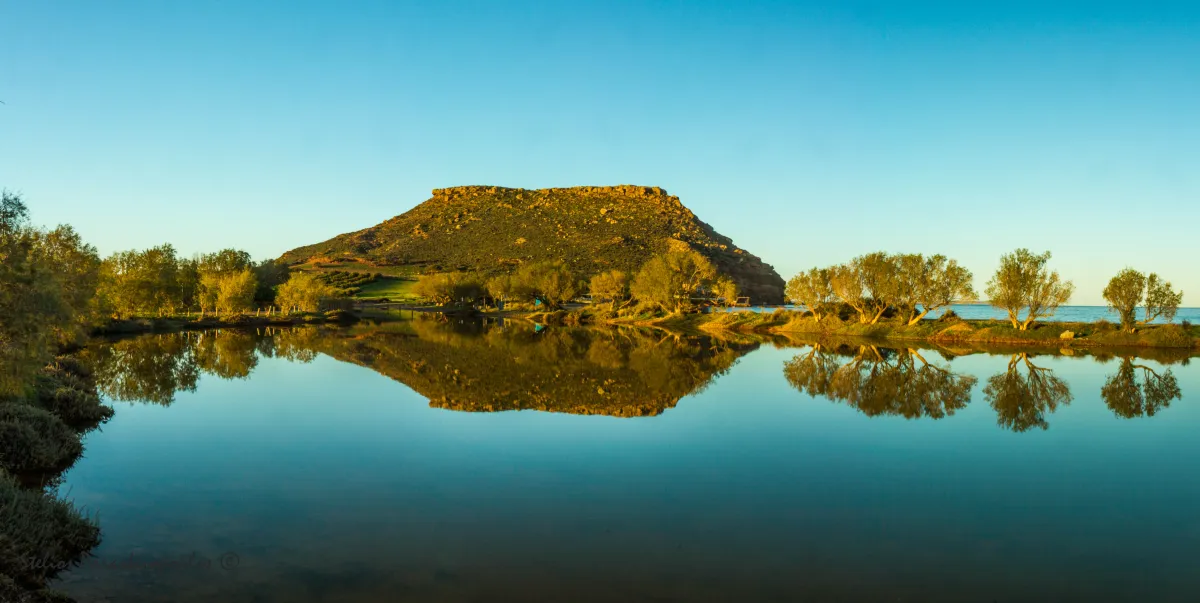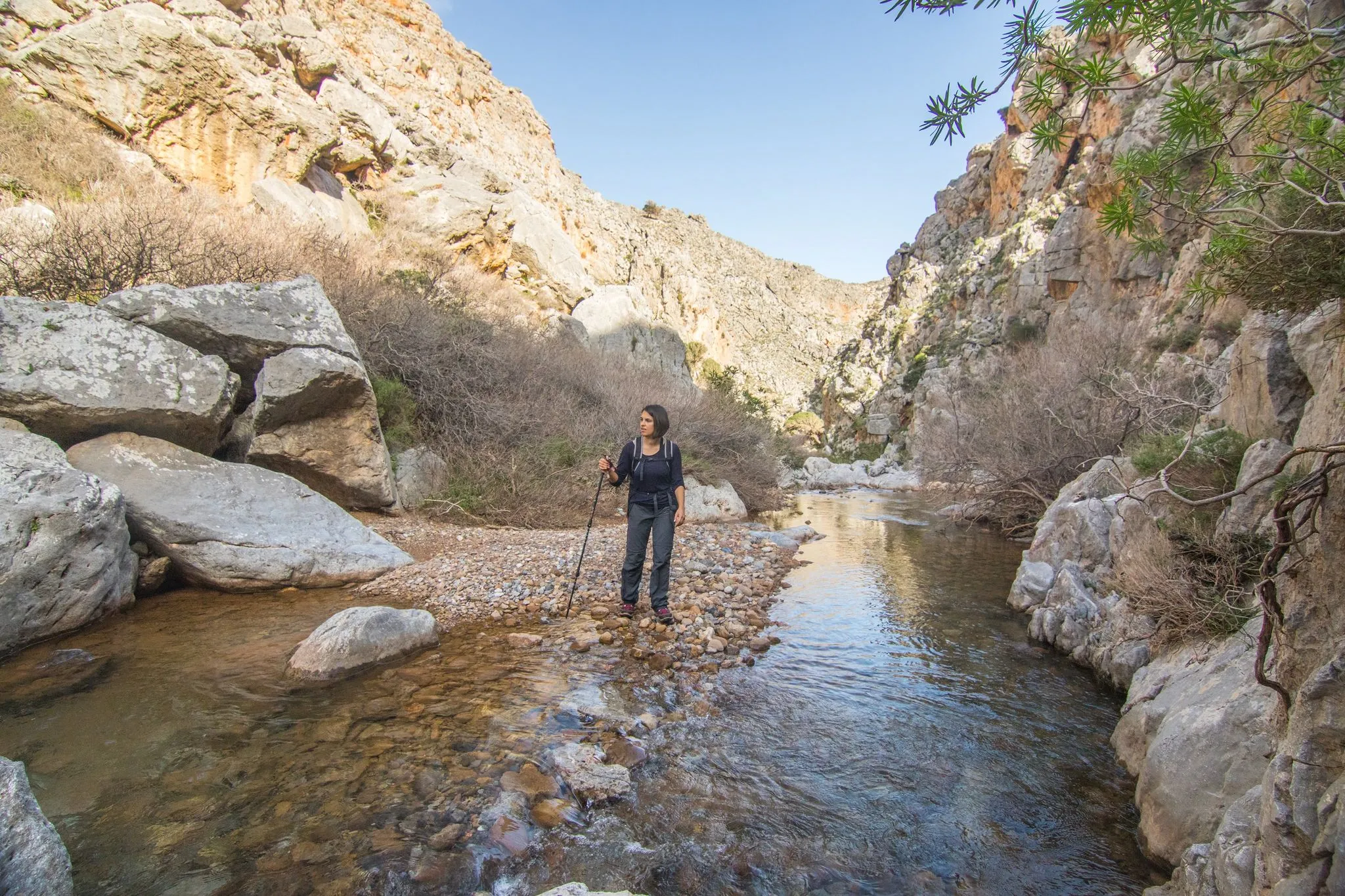The history

Zakros, at the eastern edge of Crete, probably takes its name from the pre-Hellenic word “akro”, meaning ‘edge’. It was an important trading centre in Minoan times, and was the port used by the Minoans for trading throughout the Eastern Mediterranean. The ruins of a palace, found in the inner bay of Kato Zakros, are of particular archaeological significance.
The area followed the decline of the Minoan civilization, most likely caused by the catastrophic explosion of the volcano of Thera (Santorini). Crete was settled by the Achaians and later, more violently, by the Dorians. When the island was occupied the latter, the last Minoans fled to the wider area of Zakros.
In Medieval times, it was part of the Byzantine Empire, and passed into the hands of the Venetians and then the Turks, as the Byzantine Empire declined.
Year 1961 was a milestone for the area, since it brought systematic excavations that brought to light the fourth largest Minoan palace in Crete, making Zakros a destination for visitors from all over the world.
The olive oil
The cultivation of olive trees in Eastern Crete is as old as time – dating at least back to the Minoan era. The first finding that documents this cultivation is a votive cup containing almost flawlessly preserve olives, which was found in the palace of Kato Zakros during the excavations of 1963.
The local climate and the relative abundance of water, compared to other nearby areas, mean that olive trees can thrive here. The local olive trees are native wild olives that were domesticated. Today, there are trees in the area dating as far back as the 16th and 17th century.
Up to the 19th century, the locals were mainly involved in animal husbandry and cereal cultivation. The olive oil produced in primitive oil presses was intended for domestic consumption. The first wave of more intensive olive farming occurred in the 1830s-1840s, as a side-effect of the growth of soap production. This first change brought about the construction of new olive presses and the planting of new olive groves. The olive oil trade developed at the beginning of the 20th century. The second major upturn occurred after the First World War, bringing extensive land clearing, use of fertilizers and spraying against olive flies. The Olive Farming Cooperative of Zakros was established in 1948, and the first modern oil factory opened its doors in 1949. New roads and the modernization of the watering networks reinforced the local rural economy, and olives became a monoculture from the 1960s onwards. Today, around 10,000 square kilometres of land, with approximately 260,000 olive trees of the ‘Koroneiki’ variety, are cultivated in the area of Zakros. Annual production reaches 850 tonnes of extra virgin olive oil with a very low acidity level, rich aromas and excellent sensory and chemical properties.
Sitia olive oil has been recognized as one of the best in the Mediterranean; local producers have received awards in international competitions, and it is the only olive oil to have earned the PDO (Protected Designation of Origin) classification for the Japanese market.
However, challenges still exist. Climate change, and the dramatic reduction of rainfall, combined with intensive cultivation, has exhausted the erstwhile rich water table, causing the main threat to the future of olive farming in the area. Additionally, the European Union’s recent decision to allow the artificial addition of polyphenols (i.e. the beneficial substances contained in olive oil) to seed oils, creates unfair competition for olive farmers.


Nature

La région de Sitia – Itanos – Zakros est qualifiée par l’UNESCO comme « Géoparc de Sitia ». Elle inclut les zones de Sitia, Itanos, Lefki et les zones côtières, du Nord au Sud, de Zakros, Palaikastro, Ziro, Werokambos, Sitanos et Karydi.
Le Géoparc de Sitia contient un riche patrimoine géologique qui inclut les nappes alpines basales de Crète. En outre, de grandes séries de nappes sédimentaires postalpines et, notamment, des roches du miocène, du pliocène et du pléistocène.
The area of Sitia-Itanos-Zakros has been characterized as the “Sitia Geopark” by UNESCO. It includes the areas of Sitia, Itanos, Lefki and the coastal areas, north to south, of Zakros, Palekastro, Ziros, Xerokambos, Sitanos and Karydi.
The Sitia Geopark has a rich geoheritage, which includes the main alpine areas of Crete. It also includes large sedimentary ranges from the post-alpine areas, and particularly miocene, pleiocene and pleistocene rock formations. More than 100 geosites have been designated inside the geopark’s territory, namely locations with specific features like exceptional rock outcrops, impressive geoformations and rocks full of fossils. These geosites are marked and accessible to visitors.
The brush that covers many parts of the park is dominated by low, thorny bushes, such as Thorny Burnet (Sarcopoterium spinosum) and aromatic plants; these are inhabited by the invertebrates, reptiles and mammals that live in such areas. Large forest ecosystems or tree clusters do not exist except in the Vai Palm Forest, dominated by the Theophrastus palm, and clusters of Kermes oaks, plane trees and carob trees in gorges and ravines.
Due to its particular geographical position, the area plays host to a large number of the island’s characteristic animals and migratory birds. Twenty of the bird species that have been sighted in the area (migratory, indigenous) are in the Red Data Book of Threatened Vertebrates of Greece. As far as mammals are concerned, 14 species have been recorded in the Park area, four of which are cetaceans, like the strictly protected Bottlenose Dolphin (Tursiops truncatus), and the Mediterranean Monk Seal (Monachus monachus), the Striped Dolphin (Stenella coruleoalba) and the Common Dolphin (Delphinus delphis). Of the land mammals the most characteristic is the European Hare, the Least Weasel, the Beech Marten, the European Badger, and the Spiny Mouse, while in caves there are Pipistrellus savii bats, a strictly protected species. Many of the eight species of reptiles and two of the three species of amphibians of the region are included in Directive 92/43 EEC and the Berne Convention.

Activities and alternative tourism

The area has many excellent and not particularly crowded beaches; some of them, accessible only on foot, are completely untouched by human intervention.
There are many options for hiking trips, particularly for crossing various gorges and ravines without particular technical difficulties. The best-known is the Chochlakies gorge, which requires an hour’s hike and leads to a beautiful deserted beach and the impressive gorge of Kato Zakros, or “Gorge of the dead”. There is a climbing field at the entrance to this gorge, on limestone rock with permanent anchors.
The area’s caves are suitable for speleology fans. The Mountaineering Association of Sitia organizes hiking trips, gorge crossings and cave explorations.
Kouremenos Bay is a world-famous destination for surfers, with generally ideal conditions for surfing, strong winds and low waves.
The Sitia Geopark website contains information on cycling routes combined with sites of geological interest.
Overall, the Sitia area is an area of great geophysical and cultural interest, ideal for fans of nature and authenticity, and anyone wishing to get to know the genuine Cretan way of life.

If you find yourselves in our area, please don’t hesitate to contact us!
We will be very happy to help you discover the hidden beauties of our homeland!
